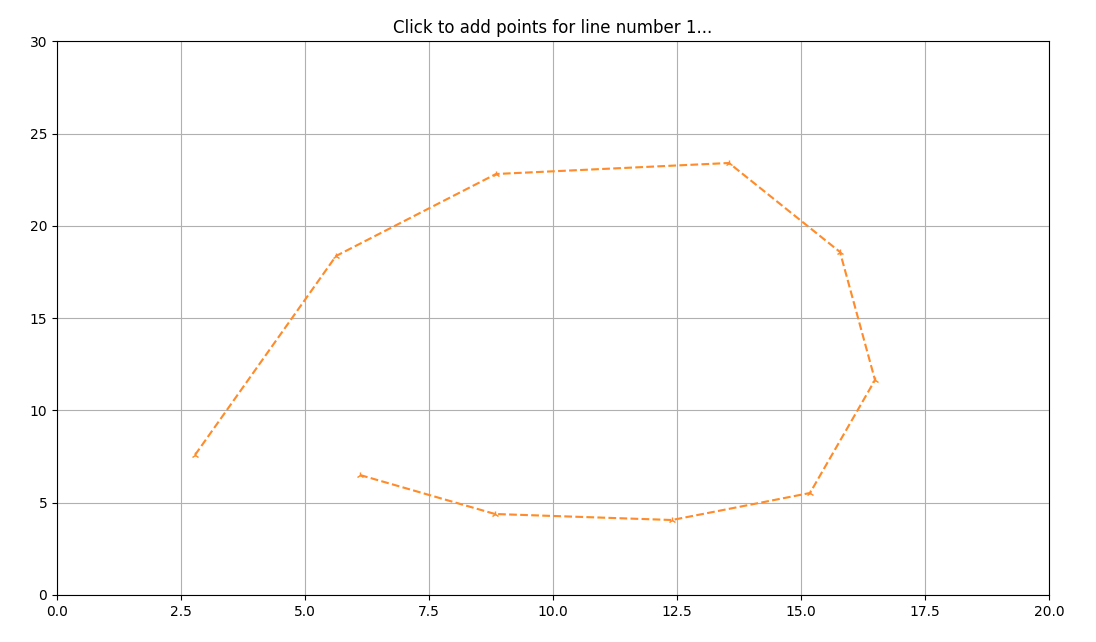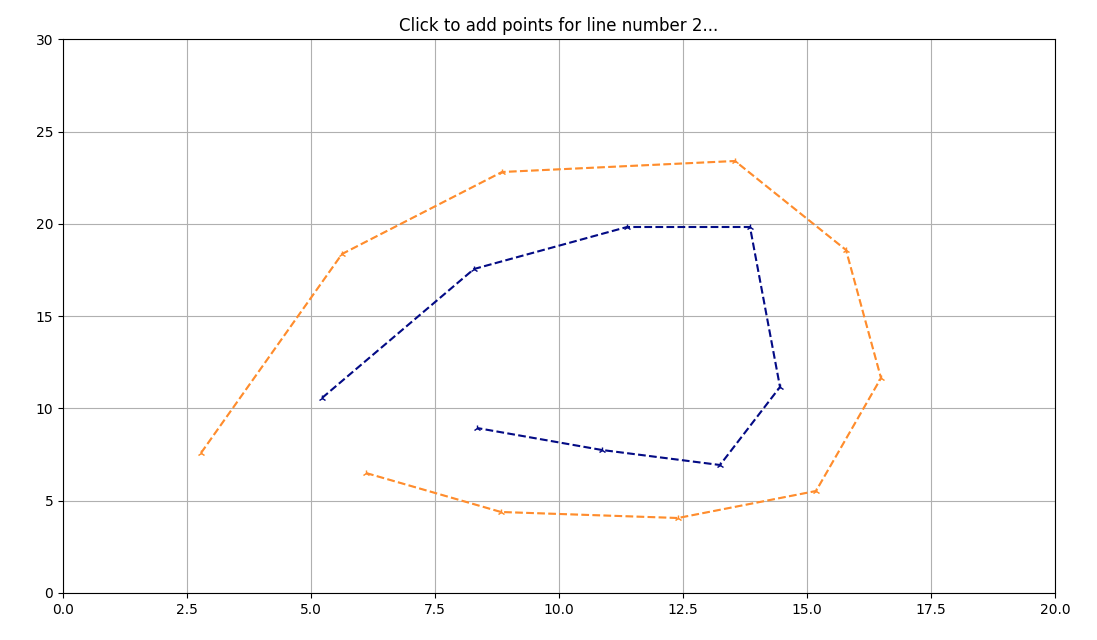A matplotlib-based canvas that allows line drawing and coordinate retrieval.
Project description
Coordinate Canvas
Interactive canvas that allows the user to draw 2D points in a grid and output their corresponding coordinates to a JSON file.
Installation
This repository uses the matplotlib's event handlers, as well as working Git and Python clients.
This installation tutorial assumes that the user's Git and Python clients are linked to the git and python3 aliases, respectively.
macOS / UNIX
# Make sure to move to a valid working directory!
git clone https://github.com/erlete/coordinate-canvas
# Virtual environment creation and activation (optional):
python3 -m venv .venv
source ./.venv/bin/activate
# Dependency installation:
python3 -m pip install matplotlib
# Program execution:
python3 main.py
Windows
:: Make sure to move to a valid working directory!
git clone https://github.com/erlete/coordinate-canvas
:: Dependency installation:
python3 -m pip install matplotlib
:: Program execution:
python3 main.py
Usage
Having executed the main.py file, the user will be prompted for three parameters:
- Width: the width of the canvas.
- Height: the height of the canvas.
- Number of lines: the amount of lines to draw.
Once said parameters are set, a matplotlib window will appear on screen. The user must now click on it in order to add a point to the canvas. When all points are set, the user must close the window so that the next one can appear.
This process will repeat as many times as specified in the "Number of lines" parameter declared at the beginning.
Finally, a coordinates.json file will be created on the directory from which the script was executed. It will contain the x and y coordinates of every point drawn, indexed by the line number of the corresponding step:
{
"line_1": {
"x": [
2.782258064516129,
5.624999999999999,
8.850806451612904,
13.548387096774192,
15.786290322580644,
16.491935483870968,
15.181451612903224,
12.399193548387096,
8.830645161290324,
6.108870967741935
],
"y": [
7.58141719198743,
18.364792370355655,
22.808193197622966,
23.404259162256384,
18.581543630222352,
11.645503314488018,
5.522280223253799,
4.059209219153588,
4.384336108953634,
6.497660892653939
]
},
"line_2": {
"x": [
5.221774193548387,
8.286290322580644,
11.370967741935484,
13.8508064516129,
14.45564516129032,
13.245967741935484,
10.866935483870968,
8.346774193548388,
18.024193548387096
],
"y": [
10.561747015154527,
17.55197514585554,
19.827863374455866,
19.827863374455866,
11.157812979787945,
6.931163412387336,
7.743980636887453,
8.936112566154293,
9.261239455954339
]
}
}
Troubleshooting
This program does not always work with Visual Studio Code integrated shell. It can detect and handle events, yet it will be unable to represent drawn points on the canvas. It is highly recommended to execute the program in a native shell, such as bash, zsh or Windows command prompt.
Project details
Download files
Download the file for your platform. If you're not sure which to choose, learn more about installing packages.
Source Distribution
Built Distribution
Hashes for coordinate_canvas-1.4.0-py3-none-any.whl
| Algorithm | Hash digest | |
|---|---|---|
| SHA256 | 10a9e253d66627c0d6b2a0864ccfceadea003694fe6bbf04b35b2f96e658286a |
|
| MD5 | e201fa81b7f0978b08b3be9929e3911f |
|
| BLAKE2b-256 | b7b6a8d8d45b62f44a32d2dad1aac4f42b7aa2306dd3eeaf5ad137079ccd2a8d |













